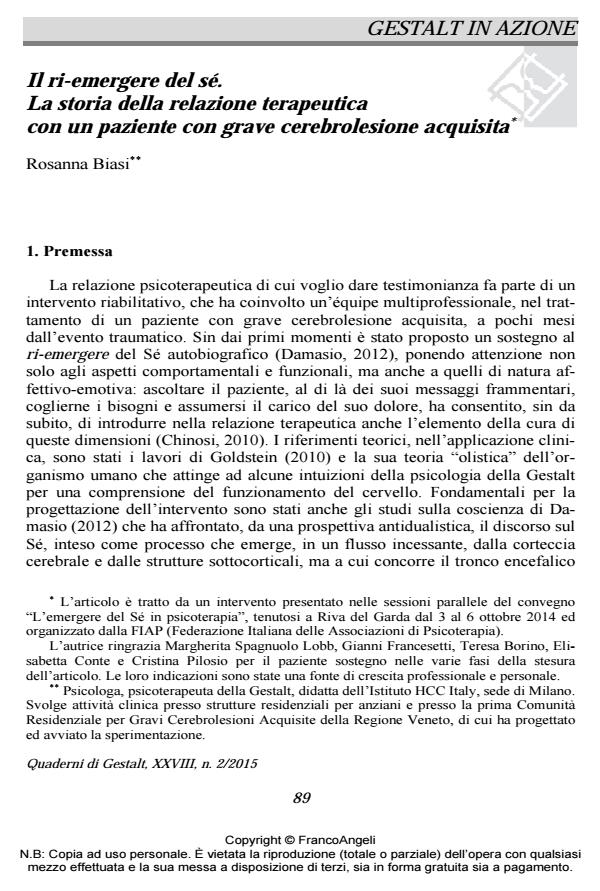The Re-emerging of the Self. The History of the Therapeutic Relationship with a Patient with Severe Acquired Brain Injury
Journal title QUADERNI DI GESTALT
Author/s Rosanna Biasi
Publishing Year 2016 Issue 2015/2
Language Italian Pages 13 P. 89-101 File size 205 KB
DOI 10.3280/GEST2015-002006
DOI is like a bar code for intellectual property: to have more infomation
click here
Below, you can see the article first page
If you want to buy this article in PDF format, you can do it, following the instructions to buy download credits

FrancoAngeli is member of Publishers International Linking Association, Inc (PILA), a not-for-profit association which run the CrossRef service enabling links to and from online scholarly content.
This work, which supports a relational environmental emergence of the self, presents a multidisciplinary rehabilitation intervention in the case of a patient who has suffered a brain injury in a car accident. Psychotherapeutic intervention, containment and rhythm of environmental stimulation has supported a new adjustement. The patient’s sense of the self has progressively increased. Form the trauma onward, moments of possible contact with the environment became more and more evident.
Keywords: Brain injury, brain injury rehabilitation, acquired disability, psychotherapy with brain injury, community for people who suffer brain injuries.
Rosanna Biasi, Il ri-emergere del sé. La storia della relazione terapeutica con un paziente con grave cerebrolesione acquisita in "QUADERNI DI GESTALT" 2/2015, pp 89-101, DOI: 10.3280/GEST2015-002006